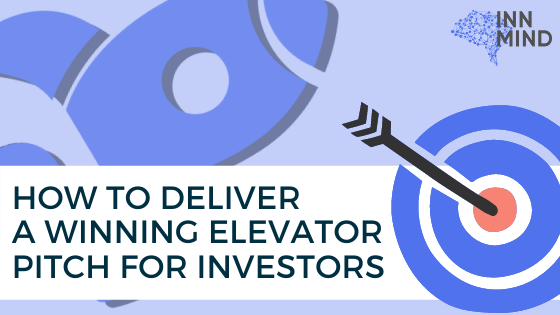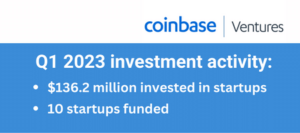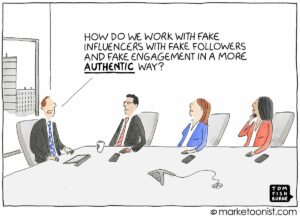
Each of us has to sell ourselves and our ideas to other people. It doesn’t matter if the goal is getting a new client or investor, impressing the boss, or securing a new job. The art of being able to catch the attention of people and influence their actions is crucial for becoming successful in society.
If these skills are important for ordinary people, they are a matter of life or death for entrepreneurs for obvious reasons. Getting a naked idea into a real, growing business involves first and foremost convincing hundreds of people of the value of your ideas and products.
What makes the situation even more difficult for startup founders is that they usually have to sell to people who are getting sold to all the time. Most notable startup investors and funds are getting hundreds if not thousands of pitches per year.
So, needless to say, it’s a worthwhile investment to put time and effort into developing your sales skillset as well as sales toolset.
And one of the most fundamental sales tools а founder has is the so-called elevator pitch.

What is an elevator pitch?
Imagine you’re in an elevator. All of a sudden Marc Andreessen walks in. You’ll be together for a few floors before the doors open and you never see him again. In less than 60 seconds you have to convince him to give you more of his time because your project presents a great opportunity for him.
This is your elevator pitch. Also worth to read a few tips from Bill Reichert on how to squeeze startup pitch into just 20 seconds.
Setting up the elevator pitch
Flying straight into pitching mode is a big mistake. It would be perceived to be too aggressive, and if the person you are pitching to erects their defenses, it would become almost impossible to get through to them.
This happens for a simple reason – people want to connect with people they like, and it’s safe to say that overly aggressive salespeople are some of the least likable people on the planet.
So, to get off to a good start, you need to open up the conversation with some social grace. The goal is to demonstrate that you see the person in front of you as a human being, rather than your next sales target.
Hello Mr. Andreessen, it’s very exciting to meet you. (handshake) I’m a big fan of your work! I’m very impressed that your fund is actively investing in seed-stage bio and health startups like Asimov. Biotech is a tough nut to crack. Are there any new early-stage biotech investments in your pipeline?
An opening tailored to the specific encounter and showcasing some common courtesy can instantly set the tone of the conversation to a pleasant one.
Moreover, finishing your opening lines with a question makes it very likely that the person would engage in a conversation, which creates the right conditions to deliver your pitch much less awkwardly.
You need to judge how long the pleasantries can go on based on the situation. If you are in a setting in which you expect the person to give you at least a few minutes of their time (for example a cocktail party), then you can indulge the conversation for a little longer and save the pitch for the end.
If you are in an elevator, however, you will have to deliver your pitch right after your target answers your opening question.
Really? That’s very interesting. Listen, even though I’d love to learn more I don’t want to take more of your time, I know you’re a busy man. My name is ...
Delivering your elevator pitch
Your actual pitch needs to have a high impact with the least amount of words possible.
It’s a mistake to think that you need to present your business plan in all of its glorious minute details in order to impress the person. Complexity and details should be conserved for your next meeting.
The elevator pitch is your business card. In a few sentences, it needs to spark interest in your target and to secure a further meeting.
There are generally speaking three legs to your elevator pitch.
Intro – who are you and what do you do
You can start with the “1 sentence pitch”:
My name is [NAME] and I help X do Y by doing Z
In this formula X is your audience or target, Y is the value you bring, and Z is your solution. Quick and clean, easy to digest and remember. This should be the same sentence you use to explain to your grandmother what you do for a living.
Here’s an example:
My name is Dr. Cave Johnson and I’m the founder of Aperture Laboratories. We are developing an app that helps doctors implement cutting-edge research knowledge into their everyday practice.
This is the part of the pitch in which you introduce yourself. Apart from informing what you and your company are doing, ideally, this sentence would present you as an authority in the subject. A phrase, sentence, or title (doctor/professor) which emphasizes your experience can go a long way into making the next sentences in your pitch more convincing.
Problem – why does the world desperately need your startup?
90% of the scientists that have ever lived are working today. Needless to say, it is hard for physicians to keep up with new relevant information from studies
Ideally, the issue should be simple and very specific. You should be able to explain it in one or two breaths. An elevator pitch is not the right place to introduce complexity.
It helps if the problem sounds concrete and indisputable. Statistics and personal experience (“Judging from my 15-year experience as a practicing physician”) can be extremely effective here.
Solution – what are you doing, and why would it be successful?
Having introduced the problem, it’s time to explain your solution and unique proposition. What are you doing, and why is it worth paying attention to?
Apart from simply explaining how it works, you need to get specific and ideally provide evidence that your solution is working. You should base this statement on examples, metrics, or milestones of your startup.
Long gone are the days when investors trusted a founder only based on ideas and promises. Investors have higher expectations and in order to convince them you are worth their time, you need to showcase you have some kind of proof of your claims.
Getting back to our founder Cave Johnson who’s pitching to Silicon Valley venture capitalist Marc Andreessen, which one sounds more convincing to you:
We will help doctors improve their results.”, or “One of our first customers Dr. Rogan improved their patient positive outcomes by 36% in 13 months – the most significant improvement since the start of Dr. Rogan’s practice.
Pretty clear, right? Data and examples make you more credible and increase your chances to stand out from the crowd. Consequently, your elevator pitches will become much more convincing once you have done some idea or product validation experiments.
Before we move onto the last part of Mr. Johnson’s elevator encounter, here is a real-world example of the Problem-Solution part of the pitch delivered by WeWork:
There are 40MM independent workers in the US: consultants, freelancers, and small business owners. Solving office space is tough and expensive, especially in cities like New York. We created the concept of space as a service. We have 20 locations in the city- where people can rent a desk or an office without any of the complications of a traditional lease, effectively saving at least 25% of the cost. They get access to a shared front desk, mailroom, and a community of like-minded people.

The call to action
Last but certainly not least, you need to motivate your target to take action, which usually means to secure a follow-up meeting.
We are planning to run a Seed round from July to October this year. I’d be extremely happy to continue the conversation and to see if we would be a fit for Andreessen Horowitz.
Stating your intentions clearly is important.
Great! Can you please write down your phone number here? Would next Monday be a good time for me to call you in order to figure out a time for a meeting?
Giving your business card and expecting them to call you after an elevator pitch is a bit too optimistic. Even if they liked you, they might not be motivated enough to take the initiative just after a meeting that lasted a minute. Because of this, make sure the next step is in your hands.
Moreover, getting them to agree to something concrete (“I will call you next Monday to figure out a meeting”) rather than something vague (“please if you are interested get in touch”) makes it much harder for your target to back down because of the level of commitment.
Last but not least, if the elevator pitch was masterfully crafted, here is where the introduction would click together with the call to action and improve its chances to succeed.
If you remember, in the intro we complimented Mr. Andreessen on his boldness for investing in early-stage biotech startups. Since Mr. Johnson is the founder of a similar startup himself, if Mr. Andreessen refuses to meet with him, he would seem inconsistent and undeserving of the praise.
In such a situation, most people would take a meeting just for the sake of remaining consistent and preserving the positive image that was established in the conversation.
Conclusion
So, in summary, your elevator pitch should include 5 basic elements:
- A natural entry into the conversation. Don’t jump into pitching mode right away, show the person you are also interested in them and that you have common courtesy;
- An introduction – who are you, what are you doing, and why should you be trusted?
- Problem – why does the world need what you are building?
- Solution – with proof that what you are building works;
- Call to action – have the person make a commitment, and make sure you are the one to initiate the next step.
And last but not least – don’t skip practice! For your pitch to be successful, you need to be confident in delivering it. Try it on friends and colleagues first, and then use it on your real prospects or join today and try InnMind VC Pitching Sessions.
Remember that the elevator pitch is not just for investors – the succinct presentation of problem-solution could be used to win over co-founders, partners, or even customers. Keep in mind that in most of the cases you'll need to have best in class presentation to support your elevator pitch for online or on-premises meetings, but it's a little bit different story.
- a
- access
- Action
- actions
- All
- amount
- apart
- app
- Art
- attention
- audience
- authority
- because
- become
- becoming
- before
- being
- BEST
- biotech
- Bit
- bring
- Building
- business
- call
- cases
- Catch
- chances
- Cities
- claims
- class
- co-founders
- cocktail
- colleagues
- commitment
- Common
- community
- company
- concept
- conditions
- confident
- Connect
- consistent
- continue
- Conversation
- could
- created
- creates
- credible
- crowd
- crucial
- Customers
- cutting-edge
- data
- delivered
- delivering
- demonstrate
- details
- developing
- different
- difficult
- Doctors
- Doesn’t
- down
- Effective
- effectively
- effort
- elements
- engage
- entrepreneurs
- especially
- established
- everyday
- example
- examples
- exciting
- expect
- expectations
- experience
- fan
- Figure
- First
- fit
- For Investors
- formula
- founder
- founders
- from
- front
- fund
- fundamental
- funds
- further
- generally
- getting
- goal
- good
- great
- Growing
- happy
- Health
- help
- helps
- here
- High
- higher
- How
- How To
- However
- HTTPS
- human
- Hundreds
- idea
- ideas
- image
- Impact
- implement
- important
- impossible
- improve
- improved
- improvement
- include
- Increase
- influence
- information
- Initiative
- interest
- interested
- investing
- investment
- Investments
- investor
- Investors
- issue
- IT
- Job
- Johnson
- join
- judge
- July
- jump
- Keep
- Know
- knowledge
- LEARN
- Level
- likely
- lines
- little
- living
- locations
- Long
- love
- make
- MAKES
- Making
- man
- Matter
- means
- meeting
- meetings
- Metrics
- might
- Milestones
- mind
- Monday
- months
- more
- most
- move
- Natural
- Needless
- needs
- New York
- number
- obvious
- Office
- online
- open
- opening
- Opportunity
- order
- Other
- owners
- part
- partners
- party
- People
- person
- personal
- Pitch
- pitches
- planet
- planning
- positive
- possible
- practice
- present
- presentation
- Problem
- Product
- Products
- project
- proof
- proposition
- prospects
- provide
- question
- Quick
- reasons
- relevant
- remaining
- Rent
- research
- Results
- round
- Run
- safe
- sales
- Salespeople
- same
- saving
- scientists
- seconds
- secure
- seed
- sell
- service
- set
- setting
- shared
- showcasing
- significant
- Silicon Valley
- similar
- Simple
- since
- skills
- small
- small business
- Social
- Society
- sold
- solution
- some
- something
- Space
- speaking
- specific
- stand
- start
- startup
- Startups
- Statement
- statistics
- subject
- successful
- sudden
- support
- Target
- The
- The Initiative
- the world
- thousands
- three
- Through
- time
- tips
- Title
- today
- together
- tools
- traditional
- unique
- Unsplash
- us
- use
- usually
- validation
- value
- VC
- venture
- What
- WHO
- win
- winning
- without
- words
- workers
- working
- works
- world
- worth
- would
- X
- year
- Your











